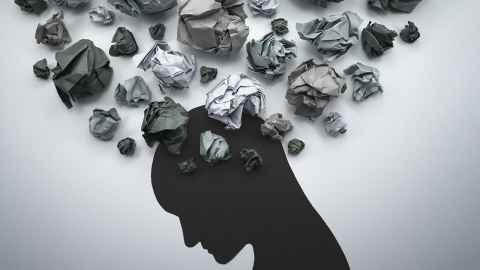A brain technique to tame depression
28 September 2021
Opinion: A technique to treat depression is only available privately in NZ. In this Mental Health Awareness Week Kate Godfrey puts a case for making it available widely.

A brain stimulation technique used widely overseas to treat depression could make a big difference in New Zealand.
Repetitive transcranial magnetic stimulation, or rTMS, has been used internationally for more than 15 years in places including Canada, the US, and Australia, where the government just allocated A$288.5 million for subsidising treatment.
Here, in New Zealand, we’ve only dabbled so far. There are just five rTMS machines – three in Auckland, one in Rotorua, and one in Dunedin – and psychiatrists are offering the service on a private, user-pays basis.
With New Zealand’s rate of depression one of the highest in developed countries, it’s time to expand that dramatically. University of Auckland research supports the case for the treatment.
This little-known treatment is a form of non-invasive brain stimulation. A TMS machine passes an electrical current through a handheld electromagnetic coil, producing a temporary magnetic field. When this coil is placed on the patient’s head, the magnetic field is large enough to activate the underlying nerve cells.
What’s it like to experience?
In one of our studies in Auckland, most participants agreed that a repetitive sensation of tapping on the head felt a bit like a “woodpecker”.
One person said: “I have found it’s a sensation that you get used to, you adjust to it. And at the start of each session, sometimes it seems a little bit uncomfortable, but after a couple of rounds you adjust.”
What matters most is effectiveness. International studies show rTMS performs well versus a wide range of antidepressant medications. Remission rates for depression after six weeks of treatment were higher for rTMS than competing medications in a recent meta-analysis.
During treatment sessions, pulses of magnetic fields are applied to a brain region known as the prefrontal cortex, an area that does not work properly in depression. The patient remains awake, sitting comfortably in a chair. Typically, a session lasts for 20 minutes, and a full course of treatment involves going into a clinic Monday to Friday for four to six weeks.
Twenty years of research demonstrates that rTMS is a safe and effective treatment for depression. Early studies of brain stimulation in healthy participants found positive effects on mood, which led researchers like Dr John O’Reardon at the University of Pennsylvania to investigate applications for mood disorders.
Interestingly, the effects on mood in healthy participants have not since been replicated, but clinical trials have consistently shown rTMS is a robust treatment for depression.
Transcranial magnetic stimulation has mostly been researched and prescribed for people with treatment-resistant depression, which means at least two different antidepressant medications failed to give them sufficient relief. Thirty to 40 percent of patients diagnosed with depression are treatment-resistant, suggesting the scale of the problem.
In our New Zealand study of rTMS published in 2019, we found the treatment worked for 40 percent of participants, with another 20 percent partial improvement in symptoms. Some people were able to return to work or even leave inpatient units.
How does TMS compare to other treatments?
Traditional antidepressants can have significant side effects including drowsiness, weight gain, and sexual dysfunction, which sometimes lead to people quitting their medication even though it’s otherwise helping them.
A standout benefit of rTMS is an absence of identified long-term negative effects and minimal side effects. The treatment is generally well-tolerated, with many patients opting to read or even sleep during a session, although some people can experience an uncomfortable tapping on the scalp or a mild headache after treatment.
International studies have found the cost of providing rTMS is lower for treatment-resistant patients compared to trying more antidepressant medications or electroconvulsive therapy.
There’s still more to learn about how the treatment works, and our research at the University of Auckland is contributing. We have looked at the brain before and after treatment to see how rTMS is changing activity, with results of our MRI and EEG studies soon to be published.
Internationally, researchers are experimenting with shorter treatment protocols that could be more accessible and potentially more effective. It is important to note these optimised protocols use the same machinery as current standard treatment, meaning the field can quickly adapt and offer the latest evidence-based treatments without incurring further costs for new equipment.
The availability and awareness of rTMS in New Zealand needs to be increased. It’s heading in the right direction but has a long way to go. Currently, it is only available through private psychiatrists, which limits access for those without the money to pay. Australia’s recent investment will allow tens of thousands of patients to receive this potentially life-changing treatment. New Zealand needs to follow suit, integrating rTMS into the public healthcare system.
Kate Godfrey is a research technician in the Faculty of Medical and Health Sciences .
This article reflects the opinion of the author and not necessarily the views of the University of Auckland.
Used with permission from Newsroom A brain technique to tame depression 28 September 2021.
Media queries
Alison Sims | Media adviser
DDI 09 923 4953
Mob 021 249 0089
Email alison.sims@auckland.ac.nz